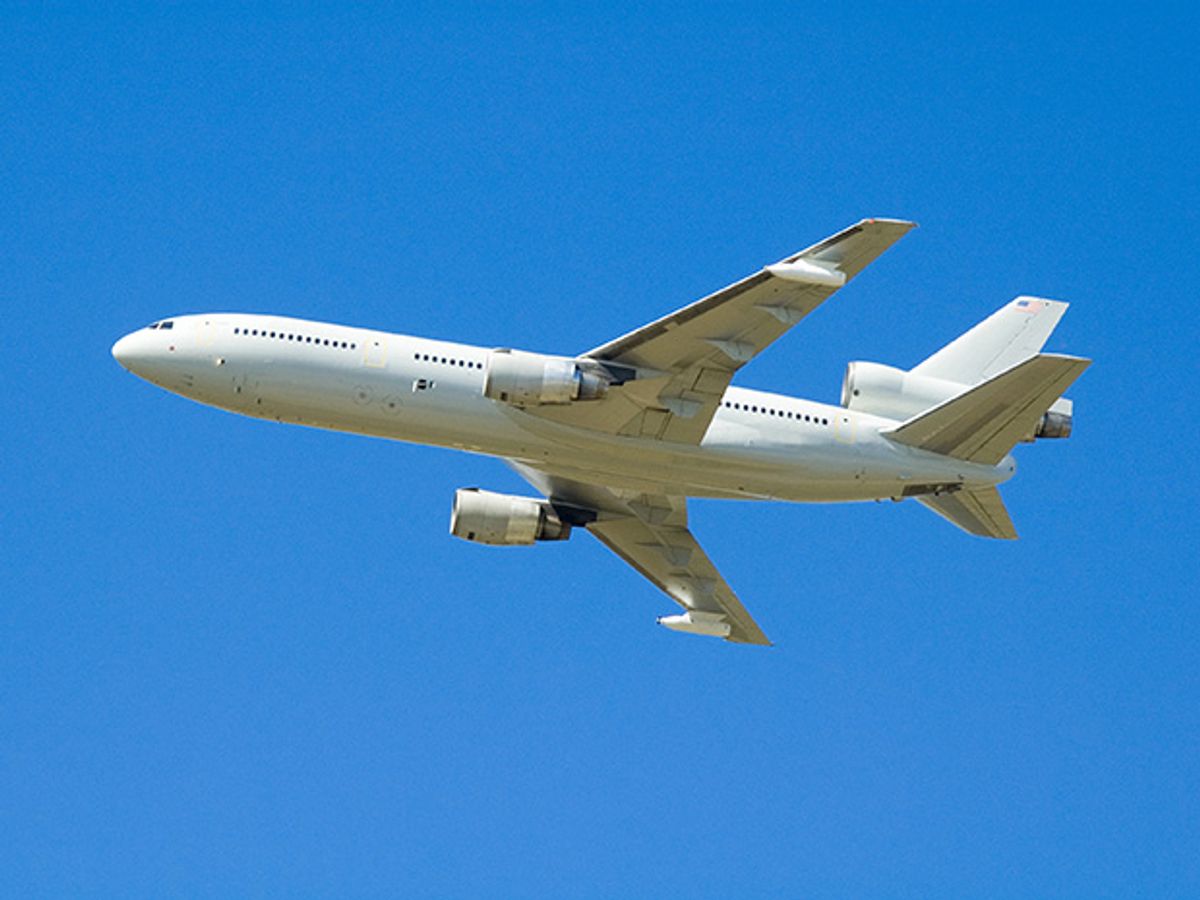Heads of state will be talking climate in Paris this week. And next year, when the International Civil Aviation Organization meets, national representatives will find themselves under great pressure to sign a deal that reduces greenhouse gas emissions from air travel. Although improved aerodynamics, greater engine efficiency, and higher passenger density have cut per-passenger emissions in half compared with 1990 levels, totalaviation emissions still increased by 3.6 percent every year, which means a doubling every 20 years.
But the aviation industry, which accounts for 2.5 percent of global carbon emissions, is already tackling the problem. In a bold open letter published in September, airline industry leaders including Boeing and Airbus vowed to flatten aviation emissions by 2020 and halve them by 2050 compared with a 2005 baseline.
A new study published in Nature Climate Change shows that this goal might just be reachable, at least in the industrialized world. The study shows that U.S. passenger airlines could cut emissions in half by 2050 compared with 2012 levels—a reduction of 2 percent per year for the next 35 years. Doing so would involve a few smart aircraft retrofits, design upgrades, and more efficient air traffic management and flight operations. These changes would have a minimal effect on the airlines’ bottom lines. In fact, a few carriers are already adopting some of these straightforward changes.
Researchers at the University College London (UCL), have focused on the fleet of single-aisle twin-engine aircraft flying U.S. skies. Andreas Schäfer, the professor of energy and transport who led the investigation, says that these Airbus 320s and Boeing 737s are the workhorses of domestic air travel, accounting for the vast majority of traffic, fuel use, and carbon emissions. The UCL team analyzed the potential effectiveness and costs of 21 different options for cutting emissions from these aircraft. “You can change the planet if you don’t look at cost,” he says. “Until now, no real academic study has rigorously looked at the costs for reducing carbon dioxide emissions of air travel.”
Of all the options, the lowest-hanging fruit for airlines—get ready to groan—is to simply pack more passengers into planes. This could allow fewer flights for a route. And if airlines reduce the number of aircraft by as little as 2 percent, eliminating the oldest, most fuel-intensive aircraft in the process, the result would be a significant emissions reduction, Schäfer says.
Half of the emissions reductions envisioned for 2050 could come from next-generation aircraft that have lightweight carbon frames, more aerodynamic wings, and open-rotor engines. Some of these technologies are expected in 2016 aircraft models, while others aren’t likely to appear for another decade or two.
Simpler retrofits include drag-reducing upturned wingtips now found on all Boeing planes, biomass-based synthetic fuels, and electric drivetrains for taxiing (which should be introduced by 2018). “Fifteen percent of aircraft time is spent taxiing on the ground,” Schäfer says. “A significant amount of fuel could be saved if airplanes taxied more fuel-efficiently using technology similar to hybrid electric cars.”
Several air traffic management and operational strategy changes could also reduce fuel use at minimal cost to airlines. Streamlining aircraft departures and arrivals, for instance, or reducing surface congestion at airports—all of which would reduce the amount of time an aircraft waits around with its engines running. The idea of taxiing using only one engine is another option; some airlines already do that. Yet another possibility being evaluated is making aircraft lighter by reducing the amount of contingency fuel, which is carried on board in addition to spare fuel.
“No technology or measure alone can make a difference in emissions,” Schäfer says. “We need as many measures as available; and if you combine them in a meaningful way, we can reduce carbon dioxide emissions per passenger-kilometer by two percent per year.”
The story could be different in developing nations, where airplane fleets are growing exponentially. But even in those markets, he says, switching completely to biofuels could be a game-changer. A 100-percent switch to biofuels could bring airline emissions down to zero. But the journey to that point is likely to be a long-haul flight full of technical and policy turbulence.
Prachi Patel is a freelance journalist based in Pittsburgh. She writes about energy, biotechnology, materials science, nanotechnology, and computing.



